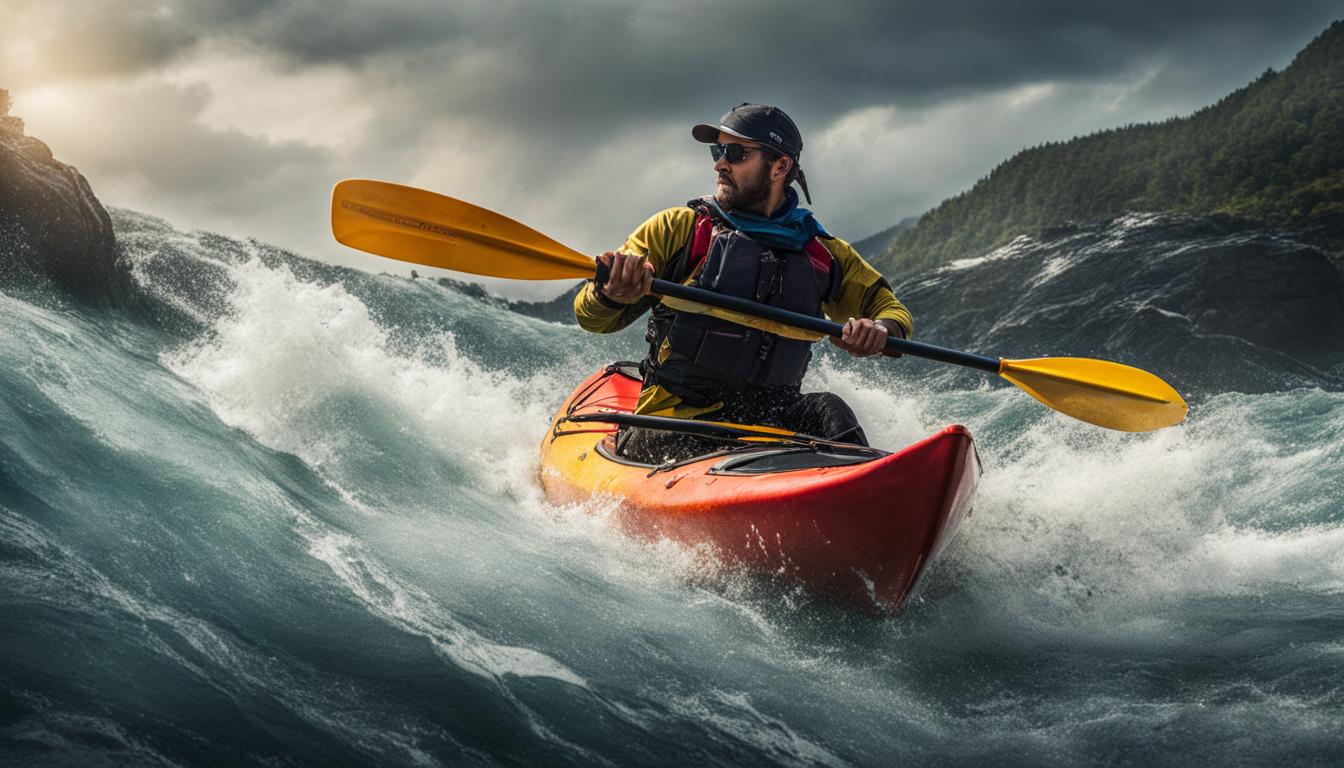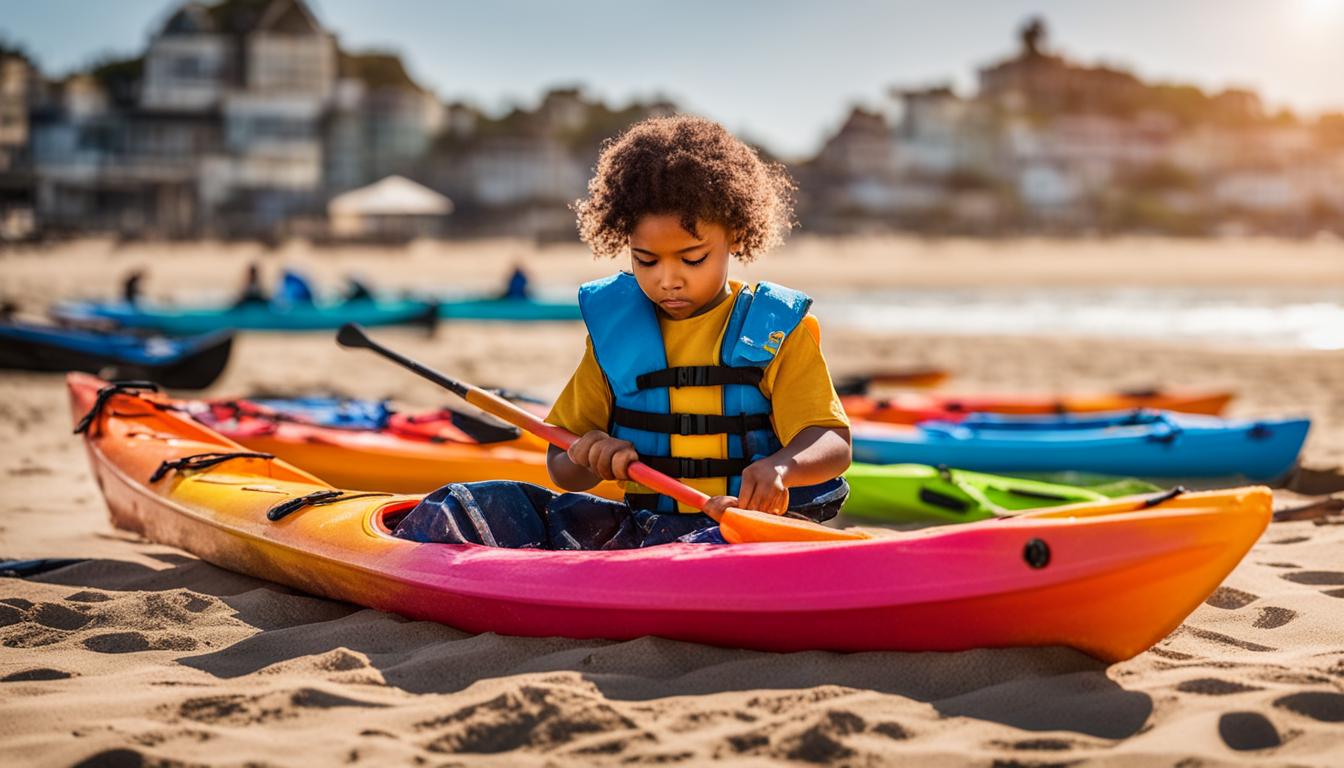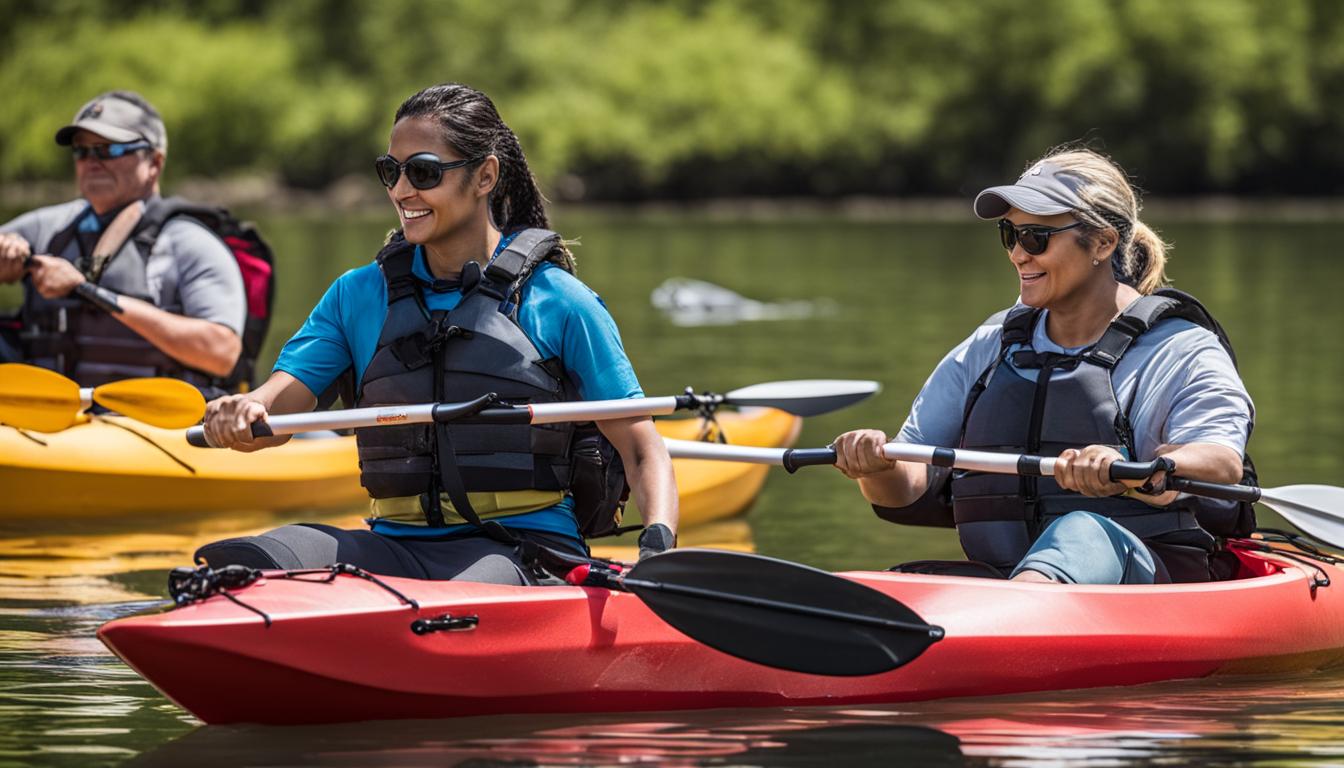Are you looking to excel in your kayak instructor courses and become a true master of the sport? Whether you’re a beginner or already have some experience, these tips will help you take your kayak training to the next level.
Mastering the roll is a crucial skill in any kayak instructor course. To help you perfect this technique, keep a relaxed mind and don’t let fear hinder your progress. Focus on the harmony of your body movements and let the physics of your body and the boat do the work. Embrace failure as an opportunity to learn and be open to extra practice or instruction. Learn where your body goes underwater and develop good orienteering skills. Lastly, ask questions and be curious to accelerate your learning process.
Key Takeaways:
- Keep a relaxed mind and embrace failure as a learning opportunity.
- Focus on the harmony of your body movements.
- Develop good orienteering skills to understand your body position underwater.
- Ask questions and be curious to accelerate your learning process.
Strategies for Mastering Kayak Instruction
When it comes to becoming a top-notch kayak instructor, there are several advanced tips and strategies that can take your teaching skills to the next level. By implementing these techniques, you can create a welcoming learning environment, develop leadership skills, and help your students overcome challenges. Here are some key strategies to consider:
1. Foster a Welcoming Learning Environment
Creating an inclusive and motivating atmosphere is crucial for your students’ success. Encourage open communication, active participation, and mutual respect among your students. By fostering a supportive community, you can make them feel comfortable and motivated to learn.
2. Develop Leadership Skills
As a kayak instructor, you play a pivotal role in guiding and supporting your students. Develop leadership skills that blend compassion with boundaries. This will allow you to effectively communicate instructions, provide feedback, and offer guidance when needed. By establishing yourself as a trusted leader, you can inspire confidence and empower your students.
3. Master Efficient Paddling Techniques
Paddling technique is a fundamental aspect of kayaking. Continually refine your own paddling skills and expertise, and then pass on this knowledge to your students. By teaching them efficient paddling techniques, you can enhance their performance on the water and help them become more confident and capable paddlers.
4. Help Students Overcome Fear
Fear can be a significant obstacle for many beginner kayakers. Help your students acknowledge and overcome their fears by providing them with tools and techniques to build their confidence. Create opportunities for controlled challenges and practice scenarios, gradually pushing their boundaries in a safe and supportive manner.
By implementing these advanced tips and strategies, you can become a highly effective kayak instructor and help your students achieve their full potential. Remember, mastering kayak instruction is an ongoing journey, so always seek opportunities to enhance your skills and knowledge.

Achieving Success in Kayak Training
If you’re eager to become a top kayak coach and achieve success in your training, there are a few essential tips to keep in mind. One crucial step is to join a reputable kayak training program like the British Canoeing RapidJoin. This program offers valuable skills and certification, giving you the credentials you need to excel as an instructor.
In addition to formal training, creating a welcoming, inclusive, and safe learning environment is vital. By fostering an atmosphere where students feel comfortable and supported, you’ll facilitate their growth and development. Encourage open communication, embrace diversity, and prioritize safety at all times.
To continue progressing in your coaching journey, it’s important to continually update and enhance your knowledge and skills. Seek out relevant courses and workshops to stay up-to-date with the latest techniques and best practices. This commitment to ongoing learning will ensure that you remain a top kayak coach and provide the best instruction to your students.
Lastly, never underestimate the power of strong communication and collaboration with your students. Effective instruction involves understanding their individual needs, providing personalized guidance, and giving them opportunities to ask questions and provide feedback. By fostering a collaborative learning environment, you’ll empower your students to achieve their full potential and enhance their overall experience.
FAQ
What are some essential tips for excelling in kayak instructor courses?
Keep a relaxed mind and don’t let fear get in the way. Focus on harmony in your body movements and let the physics of your body and the boat do the work. Embrace failure as a learning opportunity and be open to extra practice or instruction. Learn where your body goes underwater and have good orienteering skills. Ask questions and be curious to accelerate your learning process.
How can I create a welcoming learning environment for my students?
Foster strong communication and collaboration with your students to ensure effective instruction and learning. Create a welcoming, inclusive, and safe learning environment to facilitate their growth and development. Develop leadership skills with compassionate boundaries to effectively guide and support your students.
What are some efficient paddling techniques I should master as a kayak instructor?
Master efficient paddling techniques and teach them to your students for improved performance. Help your students acknowledge and overcome fear by cultivating tools and techniques to build their confidence. Develop a critical eye to identify your student’s blind spots and provide personalized guidance for improvement.
How can I gain valuable skills and certification in kayak training?
Join a reputable kayak training program like the British Canoeing RapidJoin to gain valuable skills and certification. Continually update and enhance your knowledge and skills through relevant courses and workshops. Seek feedback and reflect on your teaching methods to constantly improve and adapt to the needs of your students.





